
The Monocoupe 90 was a two-seat, light cabin airplane built by Donald A. Luscombe for Monocoupe Aircraft. The first Monocoupe was built in an abandoned church in Davenport, Iowa, and first flew on April 1, 1927. Various models were in production until the late 1940s.

The Howard DGA-6 was a pioneer racing plane, nicknamed "Mister Mulligan". It was the only airplane ever designed for the specific purpose of winning the Bendix Trophy. The plane was designed and developed by Ben Howard and Gordon Israel, who later became an engineer for the Grumman Aircraft Engineering Corporation. Mister Mulligan was designed to fly the entire length of the race nonstop and at high altitude. Neither had ever been done before. Mister Mulligan won the trophy, and thus changed the way in which long distance airplanes were designed.
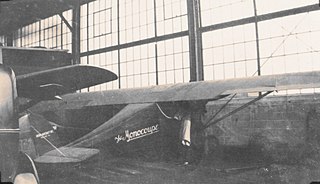
The Velie Monocoupe was an American general aviation aircraft manufactured from 1927 to 1929 by the Mono-Aircraft Corp, a division of Velie Motors Corporation.

The Fokker F-11 was a luxury flying boat produced as an 'air yacht' in the United States in the late 1920s. Technically the aircraft was the Fokker Aircraft Corporation of America's Model 9. It was sold in North America as the Fokker F-11 and was offered in Europe as the Fokker B.IV. By the time the first six aircraft had been constructed, it was already evident that the design was not going to sell well. A few were sold, two to notable multi-millionaires; Harold Vanderbilt and Garfield Wood each purchasing one. One was bought by Air Ferries in San Francisco. The F-11A cost $40,000 but the price was slashed to $32,500 as the depression set in during 1930. The F-11 was a commercial failure.
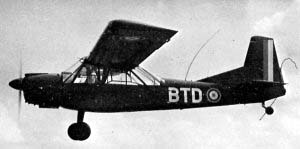
The Nord 3400 Norbarbe was a French two-seat observation and casualty-evacuation aircraft built by Nord Aviation for the French Army Light Aviation.

The Heath Parasol is an American single or two seat, open-cockpit, parasol winged, homebuilt monoplane.

The Payne Knight Twister is a single-seat, single-engine aerobatic sport aircraft first flown by Vernon Payne Sr. in the United States in 1932 and marketed in plans form for homebuilding.

The Bryan Autoplanes were a series of three experimental roadable aircraft.
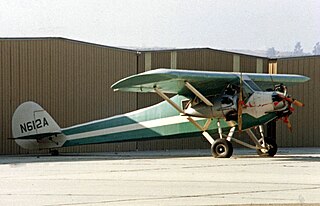
The Kreutzer Air Coach is an American-built light trimotor transport aircraft of the late 1920s.
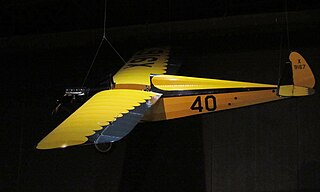
The Church Midwing JC-1, a.k.a. Church Mid-Wing Sport, is a midwing racing aircraft designed by James Church using the fuselage of a Heath aircraft.

The Folkerts SK-2, also known as Speed King Two, "Toots" and "Miss Detroit" was a racer built for the 1936 National Air Races

The Curtiss Model J was a prototype tractor configuration aircraft that became the basis for the Curtiss Jenny series of aircraft.
The St. Louis C2 Cardinal family are a series of light sport monoplanes built by the St. Louis Aircraft Corporation during the peak of the Lindbergh Boom after the Spirit of St. Louis flight of 1927.
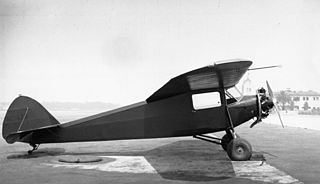
The Kari-Keen 90 Sioux coupe was a two-seat cabin monoplane.
The Alexander Airplane Company D-1 Flyabout was an early entry into the light aircraft market by the popular biplane aircraft manufacturer. The aircraft was later manufactured by Aircraft Mechanics, Inc.
The O'Neill Model J Magnum, also called the Magnum Jake and the Magnum Pickup, is a homebuilt aircraft design for bush flying operations similar to the de Havilland Beaver.
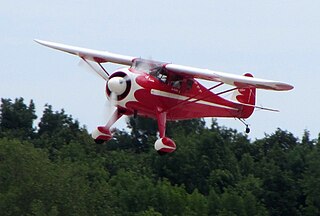
The Kimball McCullocoupe is a homebuilt aircraft built around the design of the Clipwing 110 Special Monocoupe.
The Biplanes Of Yesteryear Mifyter is an American amateur-built aircraft, designed by Rod Cowgill and produced by Biplanes Of Yesteryear, of Ontario, Oregon. The aircraft is supplied as a kit for amateur construction.

The Gee Bee Model A was an American two-seat open cockpit single-bay biplane developed by the Granville Brothers that first flew in 1929.
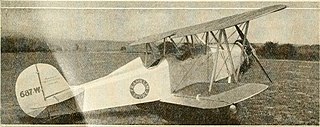
The Franklin Sport is a two seat sport and training biplane built in the U.S. in 1930. Several different engines, in the power range 55–90 hp (41–67 kW), were fitted. Two remained airworthy in 2011.


















